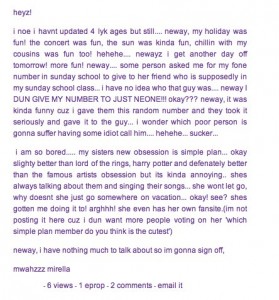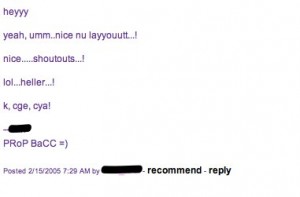In my last post, I touched on the fact that the skill set for the future of the institution (as Cathy N. Davidson and David Theo Goldberg) cannot be made into a set of “hard” objectives. Rather, the qualities needed in the production of digital, multimodal texts, and involvement in the participatory culture that surrounds it involve more abstract concepts which I seek to articulate in this post. Formulating my ideas around this has been a difficult task — much of the discourse around the production of “new media” texts involves experimentation in some way, shape, or form. Nevertheless, my work at School One has helped me start to develop my thinking about being able to list out several skills that I believe are necessary in a student’s “toolkit”.
1. Flexibility
With digital platforms constantly evolving and changing at a rapid pace, the specific skills involved in learning say, Microsoft Word, become obsolete after a short period of time. However, without a basic understanding of platforms and interfaces, students are at a loss in terms of learning how to use new technologies. This leaves students in the dark in terms of adapting to new digital platforms. Thus, I think it integral to familiarize students with certain functions but encourage them to be flexible in terms of considering the tools that they have at hand. The skill of learning to be flexible and playful about digital interfaces allows for easier adaptation of newer tools/delivery technologies that as Henry Jenkins puts it, “come and go”.
2. Creativity and Critical Thought About Media Presentation
In my fieldwork, I have noticed that when asked about their production of multimodal texts, students are at a loss in terms of thinking through the methods in which they present their information. Students aren’t sure of what they are doing exactly, and take on digital projects for the novelty factor that digital tools bring (see my post on using iMovie for an English class). While students generally produce products that function the way in which they were intended, students are limited to the immediate effects that the tools provide. In order to push students to think out of the box and be more creative about their work, they need to be able to apply a critical lens to the way in which information is communicated. Questions that spring to mind are: what will this tool allow me to do that is different from written text? What are the other functions that this tool will afford me? Can I think of a better mode to convey what I am trying to communicate?
3. Fearlessness
In order to become part of the increasing conversations that occur on the Internet, students need to be able to learn to jump in and navigate through the endless amounts of information available at their fingertips. Given the overwhelming amount of information available, it becomes difficult to figure out how and where to delve in and join the conversation. I say this in the context of both my conversations with students as well as my own personal experiences — as a young student, it is difficult to find enough validation in what you want to say to be able to put it on a public forum. Tenacity and fearlessness are essential qualities involved in joining these conversations. These qualities are what students need to be able to join a public forum and make it benefit them.
At this point in time, these are three competencies that I can articulate to some degree. Through thinking through and framing my fieldwork within the questions that these skills now pose, I hope to work through 1) a more thorough definition of “media literacy”, 2) articulate what skills students need to be learning and how to address them within the medium of the school, and 3) present information that will ease the fear/confusion that currently surrounds the implementation of the one-to-one laptop at School One.

